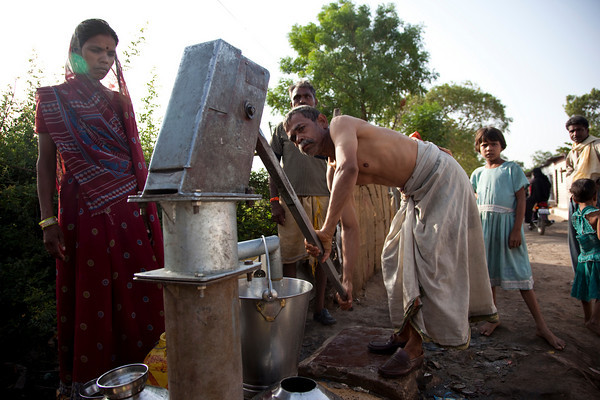
On January 29th the plaintiffs in a lawsuit, in the court of the Southern District of New York, released new evidence demonstrating the Union Carbide Corporations direct role in designing and building the Bhopal pesticide plant, site of the world’s worst industrial disaster. Previously, Union Carbide had claimed that Union Carbide India Ltd were responsible for the design of the plant and had a previous class action law suit dismissed by the same court.
Campaigners hope that this may now pave the way toward clarification of Union Carbide’s role and that, should culpability be established, then the longstanding water contamination disaster might finally come to its conclusion-saving thousands of people from further toxic exposure.
The ‘Sahu II’ federal class-action lawsuit is No. 07 Civ 2156 in the Southern District of New York. In addition to EarthRights International and Sharma & Deyoung LLP, the plaintiffs are represented by the Law Offices of Curtis V. Trinko.
Text from EarthRights International & Sharma & Deyoung LLP press release below:
New evidence shows Union Carbide’s role in designing and building Indian chemical plant that killed thousands and continues to pollute Bhopal’s water
Government of Indian state now named as a party in New York suit by Bhopal residents
January 29, 2014, New York: Plaintiffs in a lawsuit against Union Carbide Corp. released new evidence that demonstrates the chemical company’s direct role in designing and building the pesticide plant in Bhopal, India, that caused the world’s worst modern industrial disaster and continues to pollute residents’ water with toxins. Union Carbide, now a Dow Chemical subsidiary, refuses to clean up the site, claiming that its former Indian subsidiary bears sole responsibility. The victims have recently also sued the Indian State of Madhya Pradesh, (which leased the land on which the Bhopal plant was built), for the purpose of permitting cleanup of the contaminated site which has polluted the drinking water supply of nearby residential areas.
The new evidence, consisting of statements from former Union Carbide and Union Carbide India employees, as well as evaluations by experts in waste disposal systems, establishes that UCC provided critical design for the plant and its waste management system and that this design caused the ongoing toxic waste problem in Bhopal. Plaintiffs’ evidence also shows that it was a Union Carbide employee that oversaw and approved construction and design implementing Union Carbide’s plan for the Bhopal plant. A deadly gas leak from the Bhopal plant in 1984 killed several thousand people, and injured many thousands more.
This evidence was submitted in court in January in Sahu II v. Union Carbide Corp., a federal class-action lawsuit filed by residents of Bhopal whose land and water remain contaminated by waste from the chemical plant. A previous lawsuit, Sahu I, was dismissed last year after the courts found insufficient evidence that Union Carbide was sufficiently involved in creating the toxic waste.
“This evidence demonstrates that Union Carbide was intimately involved in every aspect of designing and building the Bhopal plant, including the waste disposal systems,” said Rick Herz, counsel for the plaintiffs and Litigation Coordinator for EarthRights International. Co-counsel Rajan Sharma, of the New York law firm Sharma & Deyoung, added, “These families have been living with Union Carbide pollution for decades and they deserve justice. Union Carbide refuses to submit to the jurisdiction of India’s courts and asserts that American courts may not grant relief without the participation of the Indian government.”
The plaintiffs have also sued the Indian state of Madhya Pradesh, which now owns the Bhopal site, to compel its cooperation in the cleanup of the contamination. As of today, neither the Government of India nor the State of Madhya Pradesh has appeared before the court.
The Sahu II lawsuit is No. 07 Civ 2156 in the Southern District of New York. In addition to EarthRights International and Sharma & Deyoung LLP, the plaintiffs are represented by the Law Offices of Curtis V. Trinko.
EarthRights International is a NGO with offices in the United States, Thailand, and Peru specializing in protecting human rights and the environment, and corporate and government accountability. More information on ERI is available at http://www.earthrights.org.
Contact: Rick Herz, (202) 466-5188 x114, [email protected]
Raj Sharma, (212) 856-7236, [email protected]
Rachna Dhingra: 9826167369, [email protected],


